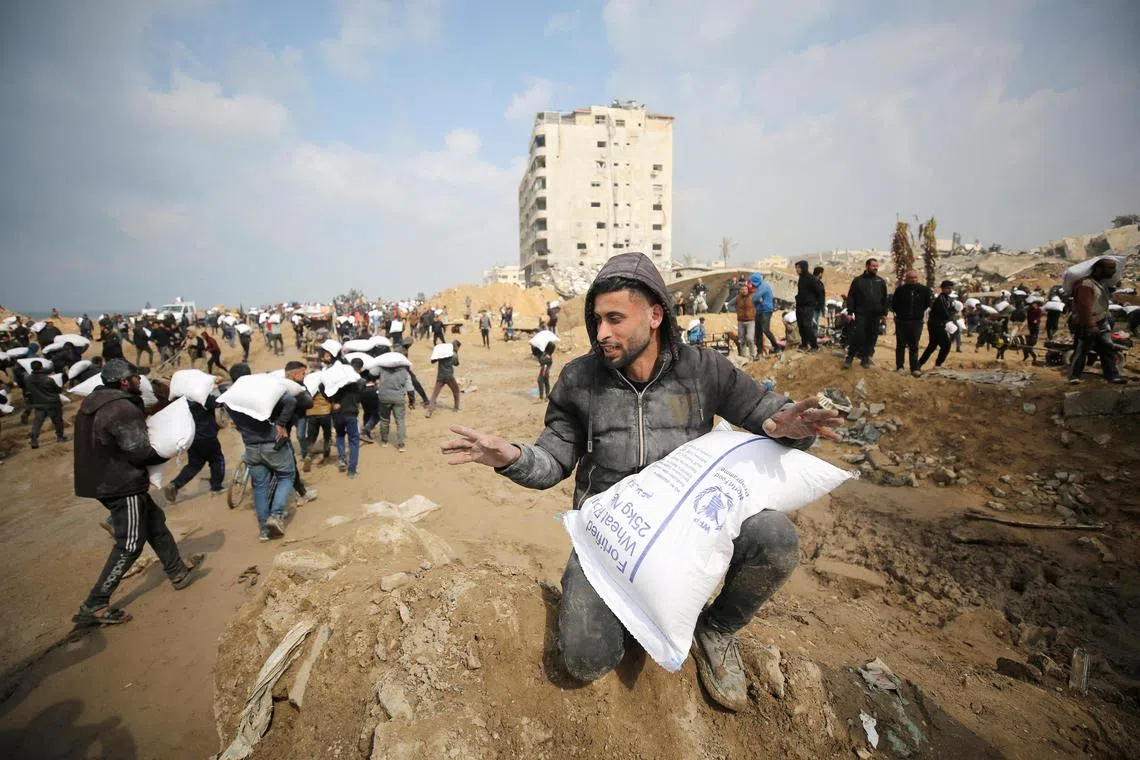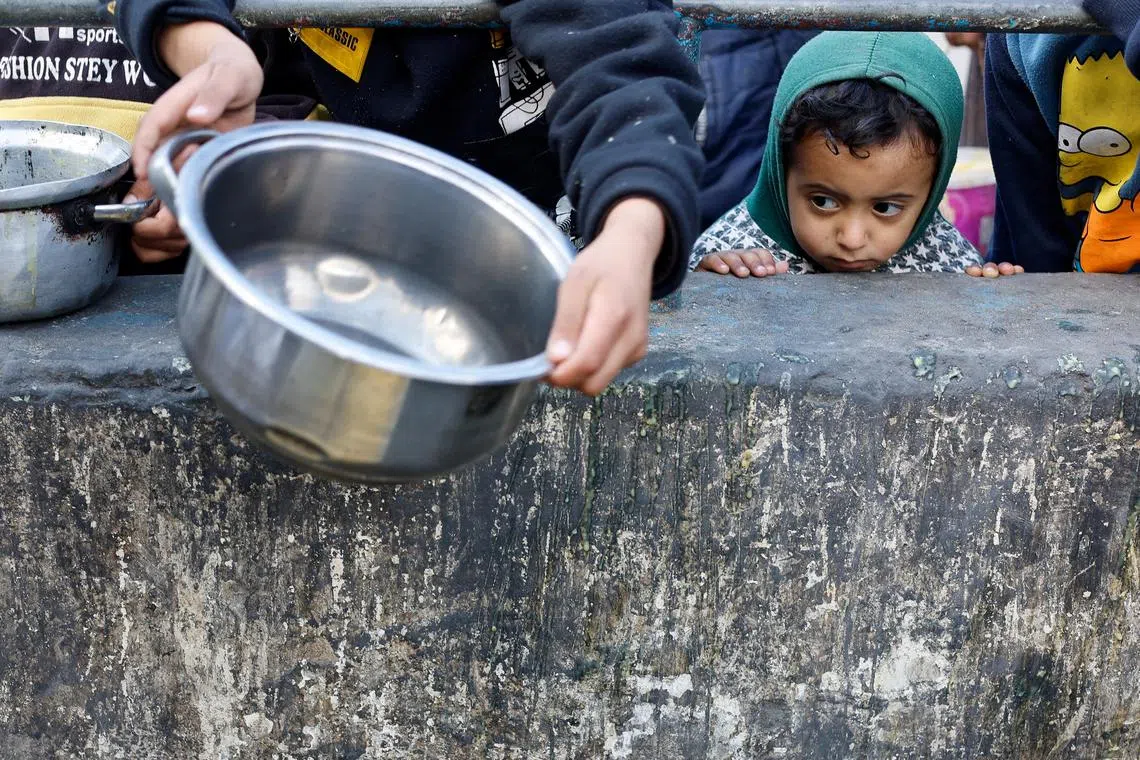UN blames security collapse as aid deliveries to Gaza dry up
Sign up now: Get ST's newsletters delivered to your inbox

Palestinians carrying bags of flour they grabbed from an aid truck near an Israeli checkpoint.
REUTERS
Follow topic:
GAZA – The flow of aid entering Gaza from Egypt has almost dried up in the past two weeks, and a collapse in security has made it increasingly difficult to distribute the food that does get through, according to UN data and officials.
Daily figures show a precipitous drop since Feb 9 in aid supplies reaching Gaza, where the mostly displaced population of 2.3 million is facing crisis levels of hunger.
Before the conflict, Gaza relied on 500 trucks with supplies entering daily. Even during intense fighting in January, around 200 aid trucks made it through on most days.
But according to UN figures, from Feb 9 to 20, the daily average fell to just 57 trucks. On seven of those 12 days, 20 or fewer trucks made it through, including just four trucks on Feb 17.
Deliveries through the Rafah crossing between Egypt and Gaza have been almost totally halted.
While more trucks have occasionally arrived through Israel’s Kerem Shalom crossing, they have frequently been disrupted by Israeli protesters seeking to block deliveries. The crossing was closed from Feb 8 to 10 and Feb 15 to 17.
Israel, which checks all trucks entering Gaza from both crossings, blames the United Nations for the fall-off in deliveries, and says it is prepared to speed up the clearance of aid.
“We are ready and willing to facilitate the entry of tens, if not hundreds, of trucks every day,” Colonel Moshe Tetro, head of Israel’s Coordination and Liaison Administration for Gaza, told reporters. “The bottleneck is not on the Israeli side”.
He said 450 trucks were waiting on the Palestinian side of the Kerem Shalom crossing with aid supplies for international groups to distribute in Gaza.
“If there would be sufficient and efficient work by the international community that is working inside Gaza, I think that the distribution will be much better.”
The UN says it is becoming more difficult to distribute aid inside Gaza because of the collapse of security inside the strip, where most residents are now hemmed into makeshift camps

A Palestinian child looking on while waiting to receive food cooked by a charity kitchen amid shortages of food supplies in Gaza.
PHOTO: REUTERS
Troops from the Israeli Defence Forces (IDF) now occupy most of Gaza and are responsible for safe passage for aid convoys through areas they control.
“The IDF has a responsibility to facilitate humanitarian operations within Gaza. Aid piling up at the crossing is evidence of an absence of this enabling environment amid enormous needs,” said Ms Eri Kaneko, a spokeswoman for the UN humanitarian affairs office.
“The UN and our humanitarian partners have not been able to regularly pick up supplies from the crossing points due to safety concerns and a breakdown of law and order,” she said. “Despite this, our colleagues have been taking significant risks to sustain the delivery of humanitarian supplies essential to the survival of civilians.”
Palestinian police have stopped providing escorts for aid convoys after at least eight policemen were killed in Israeli strikes, said UNRWA director of communications Juliette Touma.
Inside Gaza, desperate residents have halted convoys to seize aid from trucks.
“In most cases, when food does get taken directly from convoys, it’s because of utter desperation, with people even eating it on the spot,” said Mr Jonathan Fowler, a UNRWA spokesman.
On Feb 18, the UN World Food Programme said it was pausing limited deliveries to northern Gaza
UNRWA says it was last able to deliver aid to the north of the Gaza Strip on Jan 23. REUTERS

